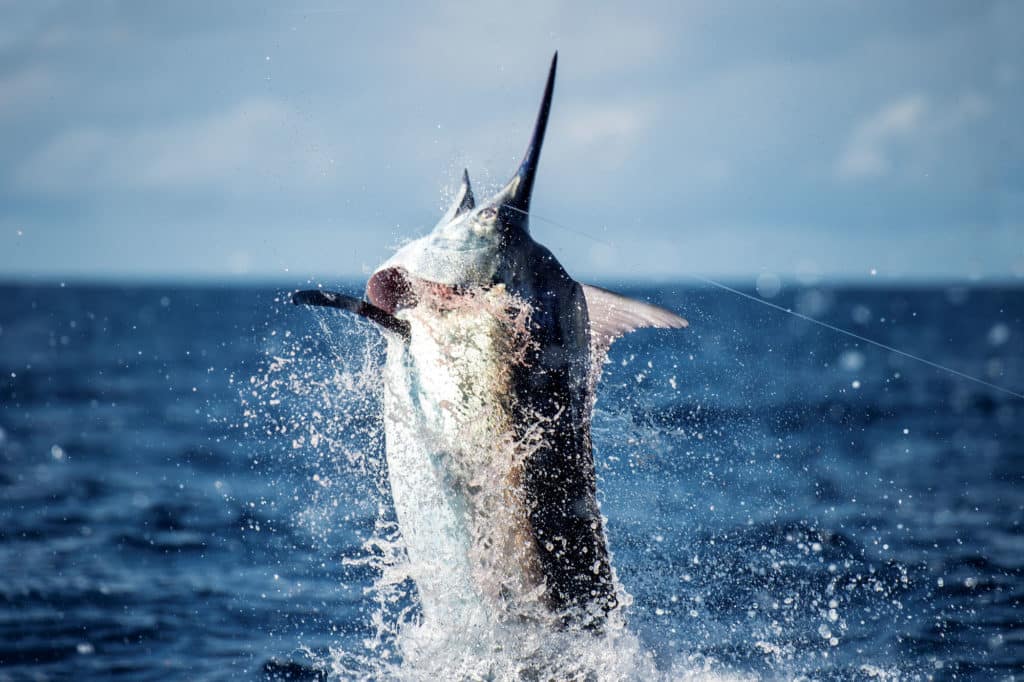
Line ran off the reel on the right rigger at an alarming rate as we jumped to our stations and prepared for the fight. Capt. Bill “Wild Bill” Wichrowski grabbed the rod out of the gunwale rod holder; the mate, Juan, ran to clear the other line; Ozzy Delgado strapped Wichrowski into the harness; and I grabbed my camera and aimed it toward the point where the line disappeared into the angry gray waves.
“Hang on!” Capt. Shane Jarvis shouted while he goosed the throttles of the 33 World Cat to ensure a solid hookup.
Behind the transom, an enormous black marlin rocketed to the surface and began greyhounding toward the horizon. Jarvis barked instructions, jockeying the throttles to help Wichrowski get control of the powerful fish.
We’d had a couple of earlier bites come unbuttoned, and with this being our final day of fishing Panama’s Hannibal Bank, the whole crew was on pins and needles. “This is a good fish,” Jarvis said. “Take your time, keep the line tight, but don’t force it.”
Finally, after a stressful 30-minute back-and-forth battle, the mate grabbed the leader, and Wichrowski, known for his role on Discovery Channel’s Deadliest Catch, got a close-up view of his first black marlin — a bruiser estimated at more than 400 pounds. The hook popped free just as the marlin eased up beside the boat, but it was an official release. Wichrowski could cross one more billfish species off the list on his quest for a royal slam.

Private Island Hideaway
I had traveled to Sportfish Panama Island Lodge on remote Isla Paridas, 12 miles off the mainland, in July 2017 because of an invite from Delgado after a chance meeting at the Miami Boat Show. Delgado, who was the senior marketing and community manager for Grundéns performance apparel at the time, was scheduled to tarpon fish after the boat show one night with a co-worker of mine. After a last-minute change of plans, I stepped in as a substitute host for the trip. Through the course of the evening, I learned that both Delgado and I needed only two more species — black marlin and spearfish — to claim all nine billfish species required for a royal billfish slam.
“You’ve got to come to my buddy Shane’s place in Panama to get your black,” Delgado said. “The big fish are there in late July on Hannibal Bank. It’s one of the most incredible places in the world to fish. I’m going down with our spokesman, Capt. Wild Bill, and I want you to join us. It’ll be a trip of a lifetime.”
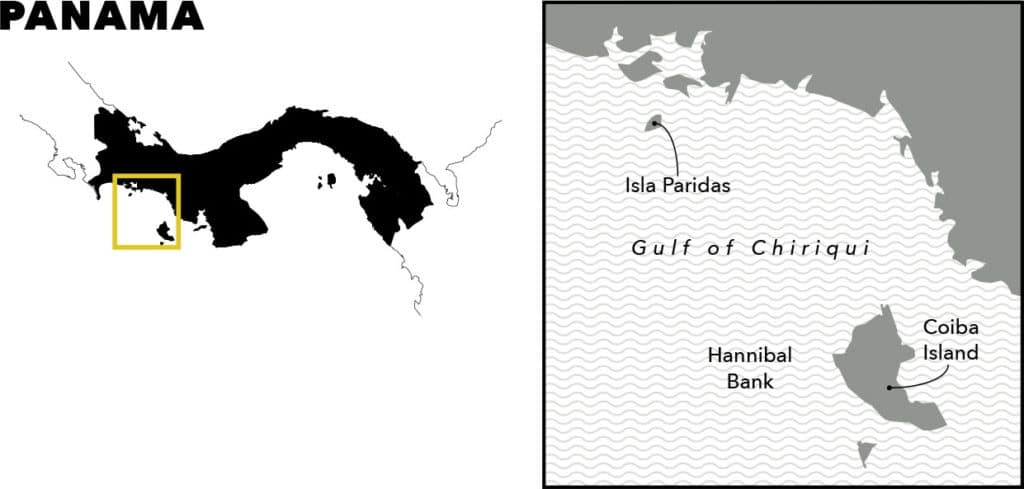
How could I say no?
Jarvis originally arrived in Panama in the late 1990s from Florida, after his father bought property there to build a vacation home. He intended to ship his boat down and stay for a year while he helped his father. During that year, he took the time to fish and learn the area, and eventually earned his captain’s license.
Jarvis officially opened Sportfish Panama Island Lodge in 2005. Accessible only by boat, the facility on Isla Paridas lies inside Panama’s Gulf of Chiriqui National Marine Park. Paridas is the largest of the 25 nationally protected tropical islands that make up the Paridas Archipelago and enjoys close proximity to some of the best fishing grounds in Panama, including our target destination: the notorious Hannibal Bank.
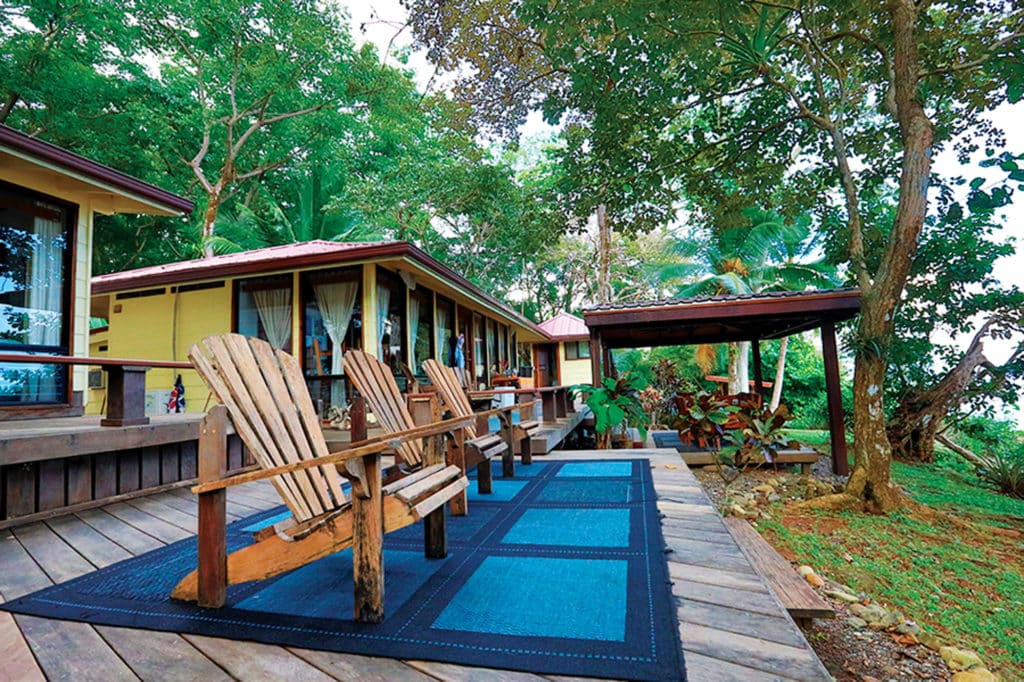
Keep It Simple
Known for reliably holding big tuna, Hannibal Bank also offers spectacular marlin fishing using live bonito bridled to large circle hooks. On average, anglers can expect two to three shots per day at big blacks off Hannibal. A respectable number of fish to 800 pounds are landed each summer, with a few over that mark on occasion.
“We normally fish for black marlin with live bait, especially this time of year,” Jarvis told me. “Hannibal Bank is a couple of miles wide by about 5 miles long. On the west side of the bank, there are a couple of high spots within a few hundred yards of each other. This one little area is almost always where all the action is. That’s where the bait stacks up and the fish are coming in to feed.”
While we got lucky one day and were able to throw jigs to a school of bonito in open water on the way out, the most productive method to quickly fill the tuna tubes involves running to the high spots and trolling bonito rigs — half a dozen pearl dusters or small squid heads attached to a cigar weight and a planer. Once you fill the tuna tubes, it’s time to fish.
After securing the live baits, Jarvis sets up a slow-trolled spread with two bonitos on the riggers and one off a flat line. He uses Accurate 80 reels spooled with 100-pound mono and 300-pound wind-on leaders, terminating with a 12/0 Mustad demon perfect circle hook. To bridle the bonito to the circle hook, Jarvis takes a slightly different approach than other captains in the area.
“Back when I started fishing here, a lot of the guys liked to use floss,” he says. “I like to use 20-pound mono instead because sometimes we have problems with these black porpoises that come and rob our baits.
“The floss is so tight that the bait won’t pop off. The porpoises grab the bait behind the hook. They’re smart; they see the hook and they’ll pull, and you’ll waste a bunch of time. If you use the mono like I do, it’ll pop off real quick so you don’t have to mess around with them and can move to another spot to keep fishing.”
While we trolled with only live bonito for blacks during my trip, Jarvis does break out lures or dead baits when targeting other species. July through September signals peak black marlin time, but November through February brings more blue marlin and sailfish into the region. Changing tactics allows him to cover more water.
“We get just as many bites on the plastics as we do on the live baits, but we get a lot more hookups on the live bait,” Jarvis says. “I also think fishing with live bait is a little more exciting and unique for most clients because they’re not used to catching marlin on live bait.”
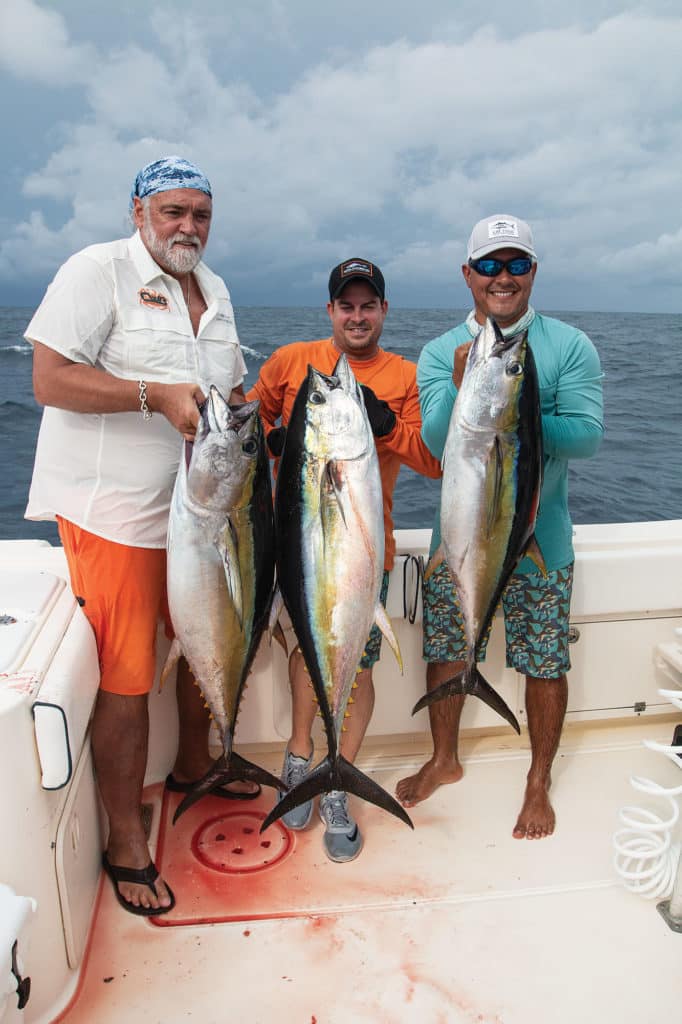
More Than Marlin
During our time in Panama, we stayed laser-focused on targeting big blacks, but there are other pelagic punishers available to bend an angler’s fishing rod. From April through June, big yellowfin tuna in the 100- to 200-pound range frequent the same areas as the marlin. Anglers looking for a physical challenge can try their hand with these beasts on spinning tackle, but be warned: It requires a strong lower back to tangle with a 200-pound tuna in deep water. Jarvis prefers to use a 30-pound conventional reel spooled with 80-pound mono and Dacron backing.
“I like the mono over braid because a lot of times, we’re hooking these big tunas in the middle of a frenzy or near a pod of dolphins,” Jarvis says. “There’s a lot of tension on the line, and if another tuna or a porpoise hits that line, braid will break under the pressure because it doesn’t stretch.”
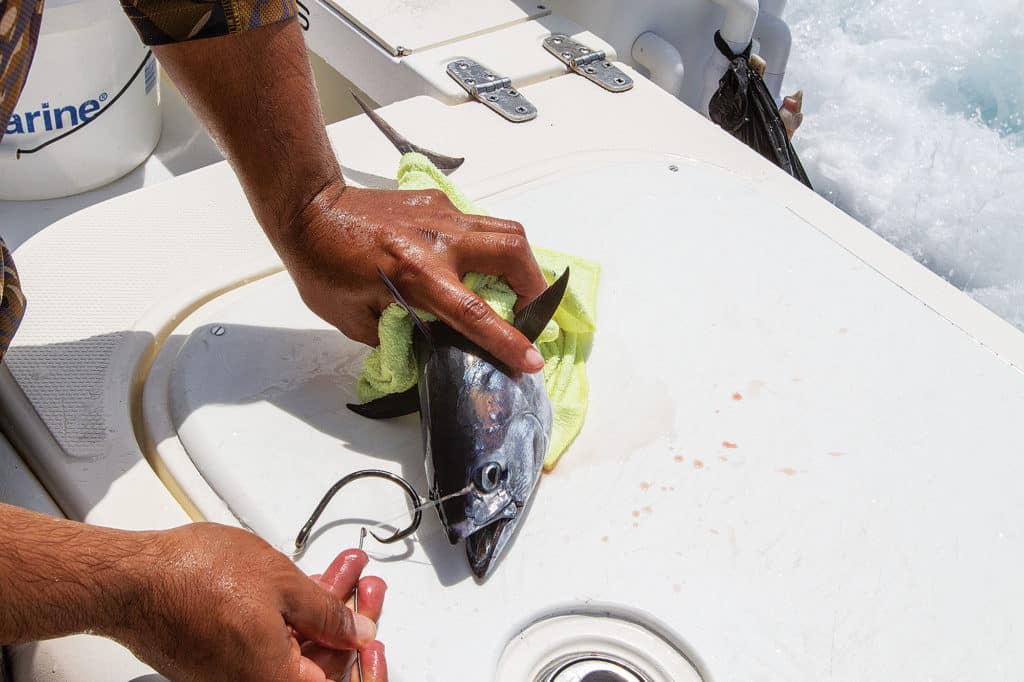
On our first day out, the marlin wouldn’t cooperate, so we took a break from trolling to track down a large school of porpoises rumored to be in the vicinity. The tunas and porpoises often swim together in the Pacific Ocean, with schools of both species numbering in the hundreds.
If he doesn’t see tunas actively busting bait on the surface, Jarvis keys in on the behavior of the porpoises to determine if there are tuna below and how to best approach them.
“If the porpoises are moving really fast, shoulder to shoulder, that’s the behavior you look for because it means they’re feeding,” Jarvis says. “Nine times out of 10 when they’re doing that, you can pitch a bait in front of them, and the tunas will hit it.”
The timing of our midsummer trip had us fishing past the peak season for the really big tuna, but we did manage to land three feisty fish in the 65-pound range, providing plenty of tasty sushi and sashimi back at the lodge.

Whistle Fish
With daylight dimming on our final fishing day, and only one live bait left, we were about to call it quits when 20 yards off the portside transom corner, a bonito broke the surface as it was simultaneously sliced in half by a large bill.
Jarvis corrected our course, and moments later, chaos ensued when another hefty black crashed the last bait. Delgado held tight to the rod while the fish put on an impressive aerial display before settling in for an all-out slugfest.
“Keep cranking,” Jarvis instructed. “Don’t rest. If you’re resting, the fish is resting, and it’s just going to take that much longer to get him in.”
After 45 minutes, Delgado began to tire, but he dug deep and ratcheted up another level of heat on the stubborn marlin. “Stay smooth and steady,” Jarvis warned, as the fish slowly came into view below the surface. “What a beauty!” he exclaimed. “This one has got to be close to 500 pounds!”
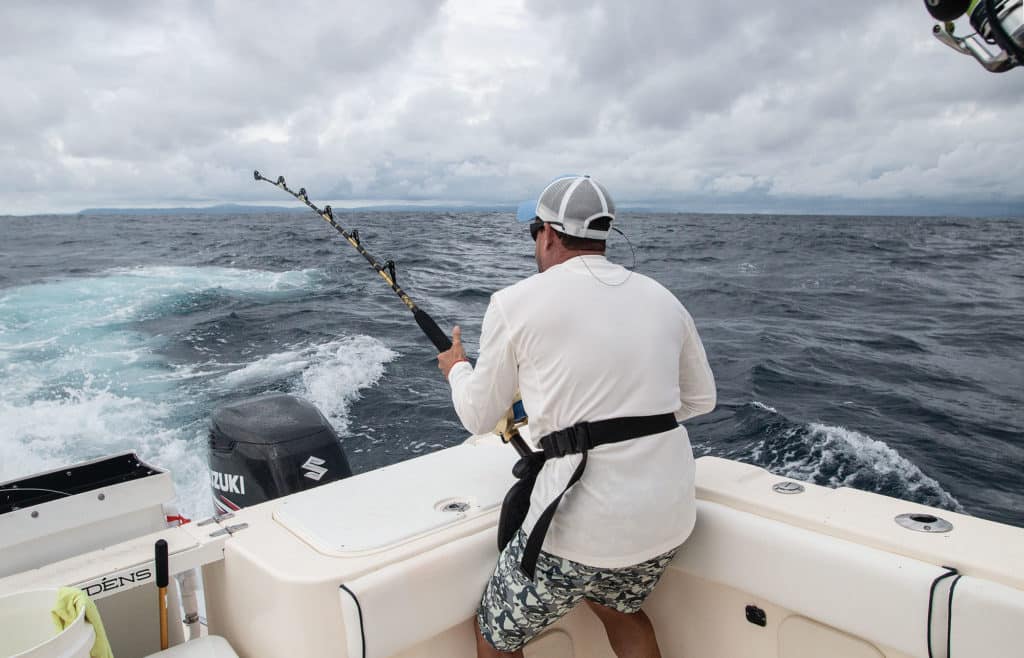
The mate leadered and tagged the fish. An exhausted Delgado posed for some pictures, and the marlin was released back to the depths. “Amazing! That’s why you come to Panama and fish with this guy,” he said, as he high-fived Jarvis. “The last day, the last two baits, and we crush back-to-back blacks over 400 pounds. Unbelievable!”
By week’s end, we had raised eight black marlin in the 400-plus-pound range, getting our hooks into five and releasing two. The handful of other boats fishing the bank reported similar numbers, with one lucky boat releasing a black estimated at 800 pounds.
Read Next: Massive Black Marlin Caught By Solo Kayaker
While I came up short in my quest to land a black on this trip, I was happy for Bill and Ozzy, who moved one step closer to completing their slams. Besides, it just gave me another excuse to return to this stunning destination and try again.
About the Author:
Mark MacKenzie is the Digital Content Director for Sport Fishing, Salt Water Sportsman and Marlin, and is a lifelong saltwater angler. Originally a devout striper fanatic from Maine, he now lives in Florida, and has traded in his waders and surf rod for a flats skiff and fly rod.








